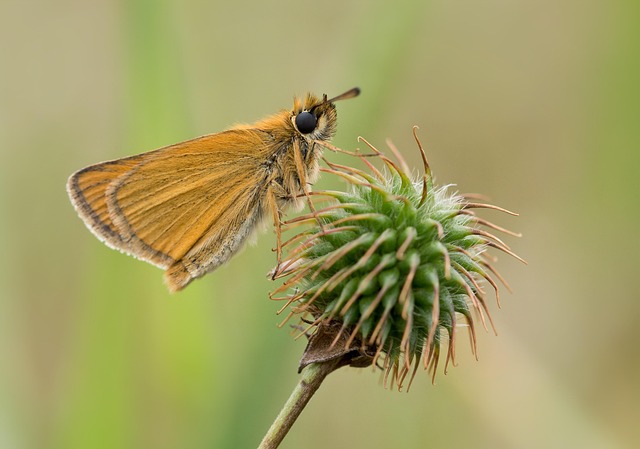A mole infestation inspection identifies burrows, active digging, and attractive habitats (lush vegetation, compost) to understand and manage moles in your yard. Strategies involve maintaining lawn health, removing debris, using barriers, repellents, beneficial nematodes, and sealing entry points to deter moles and promote a balanced ecosystem.
Are moles taking over your yard? Don’t worry, we’ve got you covered. This comprehensive guide offers expert advice on tackling mole infestations head-on. We start by demystifying mole behavior and habitat, helping you understand their peculiar preferences. Next, learn the art of conducting a mole infestation inspection to identify problem areas.
We then dive into practical strategies for reducing attractants, ensuring your yard is less inviting. Discover safe and effective repellent options, too. Say goodbye to moles and hello to a peaceful outdoor space!
Understanding Mole Behavior and Habitat
Moles are elusive creatures, but understanding their behavior and habitat is crucial for effective mole infestation inspections. These small mammals are known for their intricate tunnel systems, which they meticulously construct beneath the ground. They prefer loose, moist soil, as it’s easier to dig through and provides good insulation from temperature extremes. Moles are attracted to areas with abundant food sources, particularly worms, insects, and grubs, which make yards with lush vegetation or compost piles ideal habitats.
During a mole infestation inspection, professionals look for signs of these burrows, such as small hills or raised spots on the ground caused by their digging. Identifying where moles have been active can help in understanding their preferred habitat within your yard. This knowledge enables targeted strategies to reduce attractants, including minimizing moisture levels in the soil, maintaining a clean lawn, and reducing the presence of potential food sources, thereby deterring moles from taking up residence in your yard.
Conducting a Mole Infestation Inspection: What to Look For
When dealing with a suspected mole infestation, conducting a thorough inspection is the first step towards effective management. This process involves meticulously scanning your yard for signs that indicate the presence and activity of moles. Look for tunnels just beneath the surface, which often appear as raised ridges or irregular paths in the grass or soil. These tunnels are evidence of mole foraging and nesting activities. Additionally, keep an eye out for piles of loose soil, known as mole hills, which can be caused by their burrowing behavior.
During your inspection, examine areas with dense vegetation or organic debris accumulation, as moles tend to prefer these habitats. Look for freshly dug holes, as active infestations may result in increased surface disturbances. Also, pay attention to any peculiar smells, as moles produce a distinct odor that can alert you to their presence. Regularly assessing your yard for these signs will help you determine the extent of the infestation and guide you in implementing targeted control strategies.
Strategies for Reducing Mole Attractants in Your Yard
Moles are attracted to your yard by various factors, from food sources to suitable habitats. To effectively manage and reduce mole infestations, it’s crucial to understand and address these attractants. One of the first steps in a mole infestation inspection is identifying potential entry points and sources of food. Since moles primarily feed on insects, worms, and plant roots, minimizing these resources can deter them from your yard. Regularly maintaining your lawn, removing piles of organic debris, and ensuring proper drainage to reduce standing water are essential strategies.
Additionally, using physical barriers like metal mesh or stone walls around problem areas can help prevent moles from accessing desirable spots in your yard. Planting repellant herbs such as mint, rosemary, or lavender can also deter moles naturally. Keeping your yard clean, tidy, and free of excess vegetation will reduce hiding places and food sources, making it less appealing to these burrowing rodents. A thorough mole infestation inspection should also consider the overall health of your lawn and garden, ensuring proper care and management practices to minimize attractants.
Safe and Effective Mole Repellent Options
When it comes to addressing a mole infestation, there are several safe and effective repellent options available that can help deter these burrowing pests from your yard. One popular choice is using natural repellents like castor oil or garlic. These substances have strong odors that moles find unpleasant, acting as a non-toxic barrier around plants and gardens. Another approach involves applying beneficial nematodes, which are tiny parasites that target and kill mole larvae. This eco-friendly method is highly effective in controlling mole populations over time.
Additionally, proper yard maintenance plays a crucial role in mole prevention. Regularly trimming vegetation, removing debris, and ensuring good drainage can reduce hiding spots and food sources for moles. Conducting a thorough mole infestation inspection allows you to identify entry points and take proactive measures to seal them off. By combining these strategies, you can create an environment less welcoming to moles, promoting a balanced ecosystem while keeping your yard free from unwanted visitors.
By understanding mole behavior, conducting thorough inspections, and implementing strategic reductions in attractants, you can effectively manage and prevent mole infestations in your yard. Remember, a proactive approach through regular maintenance and the use of safe, effective repellents is key to keeping these burrowing pests at bay. For any persistent or severe mole issues, consulting an expert remains advisable for a tailored solution.
